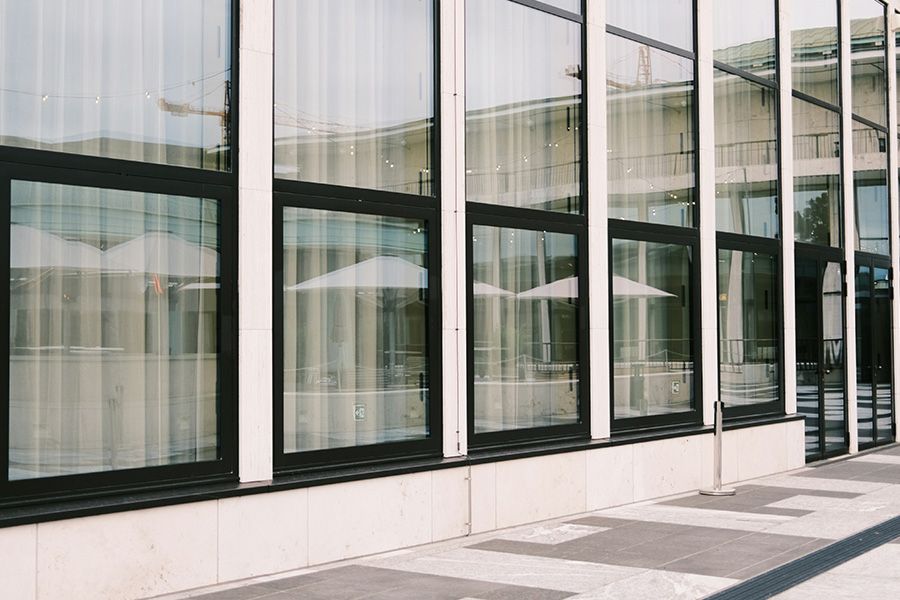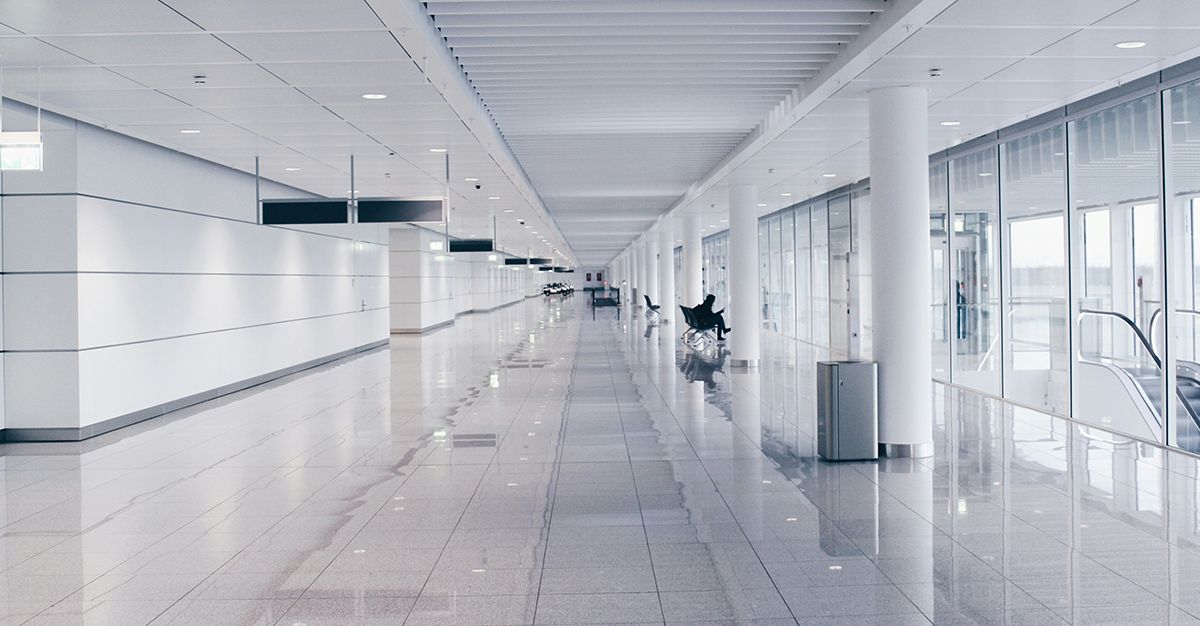When it comes to security doors, there are crucial differences between those intended for indoor and outdoor use. These differences range from material selection and corrosion resistance to locking systems and finishes. This article explores these differences to give both laymen and industry experts a deeper understanding and guidance in choosing the right door.
These doors play a crucial role in protecting our homes and buildings. Their function varies depending on whether they are located indoors or outdoors. This article aims to clarify these differences and provide insights on how to choose the right type of security door for specific needs.
Material selection and construction - difference between indoor and outdoor doors
Security doors for indoor use
Material selection for indoor environments
Indoor security doors do not have to deal with the extreme conditions that their outdoor counterparts do. This opens up a greater variety of materials, including harder woods such as oak or birch. These materials still offer high security protection but can have a more aesthetically pleasing finish to match the interior.
Lighter construction
Because interior doors do not need the same level of weather resistance, they can be constructed more lightly. This makes them more cost-effective and easier to install. But despite their lighter construction, the security aspects are not compromised. They still include security features such as reinforced locks and robust hinges.

Security doors for outdoor use
Materials and construction requirements
Outdoor security doors face a range of challenges from the environment, such as extreme weather. Therefore, the choice of material is critical. Stainless steel is a popular choice due to its high corrosion resistance and durability. Treated metal, such as galvanized or powder-coated steel, also offers excellent protection against rust and erosion. These materials ensure that the door maintains its structural integrity and function even under severe weather conditions.
Thickness and strength
To resist burglary attempts, outdoor security doors are often designed with extra thickness and reinforcements. This means not only the use of thicker metal plates but also reinforcement in the door frame and locking points. Some models also include built-in steel bars or reinforcement plates to increase resistance to burglary attempts.
Security features and locking systems
Locks and alarms in outdoor doors
Advanced locking systems
For security doors used outdoors, high-tech locking systems such as motorized locks are common. These locks are a popular solution in this category. These locks offer high security and can often be integrated with modern alarm systems and home automation systems. The advantage of motorized locks lies in their ability to be locked and unlocked remotely, providing an increased level of convenience and security for the user.
Integration with alarm systems
Another key aspect of security doors for outdoor use is their integration with alarm systems. This means that if an attempted break-in is detected, the door can automatically lock itself or send an alert to a central monitoring station or directly to the user's cell phone. This type of system offers not only a physical barrier to burglary, but also a psychological deterrent.
Biometric and electronic options
Besides traditional locks and motorized locks, security doors can also be equipped with biometric locking systems, which use fingerprints, iris recognition or facial recognition to grant access. Electronic code locks are also popular, where for example a code or key tag instead of a physical key is used to open the door.
Protective doors for indoor use
Simpler locking systems
Indoor security doors tend to have less complex locking systems. Standard locks, such as traditional cylinders and door knobs, are common. These locking systems offer a sufficient level of security for indoor environments and are simple for the user to operate.
Code locks and electronic locks
Code locks are another popular option for internal doors, especially in commercial or multi-family buildings. These locks require a code to gain access and can be easily reprogrammed when needed. Electronic locks that can be controlled via an app are also becoming more common, providing an added convenience for the user to be able to lock and unlock doors remotely.
Focus on balance between security and ease of use
The overall design and functionality of interior door locking systems is to strike a balance between offering sufficient security while being lightweight and convenient for everyday use. This means that while these doors may not have the same advanced security features as exterior doors, they are still effective in protecting against unauthorized access.

Surface treatment and durability
Surface treatment and durability play a central role in the design and function of a security door, both for indoor and outdoor use. These treatments contribute not only to the doors' physical protection but also to their visual appearance and long-term durability.
Additional aspects of surface treatment for exterior doors
Technical surface treatment methods
To increase resistance to harsh climates, advanced techniques are used in the surface treatment of exterior doors. This can include electrostatic powder coating, which provides a hard and durable surface against mechanical impact and corrosion. Other methods include hot-dip galvanizing, which involves dipping the door in molten zinc to create a robust and weather-resistant surface.
Special treatments for color and finish
To ensure that exterior doors maintain their appearance despite exposure to sunlight and weathering, UV-resistant paints and varnishes are used. These special treatments help preserve the color and shine of the doors over time, which is important not only for aesthetics but also to maintain the integrity of the material.
Surface treatment methods for interior doors
Protection against wear and tear and damage
Although interior doors are not exposed to extreme weather conditions, they are still subject to wear and tear from daily use. Therefore, durable lacquers and finishes are used to protect against scratches, impacts and other forms of mechanical damage. These treatments extend the life of the doors and keep them in good condition.
Aesthetic possibilities
An important element of the interior door finish is the possibility of customization and design variation. With a wide range of finishes, from matte to high gloss and various color options, interior doors can be customized to blend in or complement a particular interior style. This provides a flexibility that is particularly valuable in home environments or corporate offices where aesthetics play a major role.
Sustainability and environmental impact
Environmentally friendly options
Modern finishes for both interior and exterior doors are increasingly taking the environment into account. The use of environmentally friendly, low-emitting paints and treatments is becoming more common. These products reduce harmful emissions during manufacturing and during the life cycle of the doors, contributing to more sustainable building practices.
Long-term value growth
Investing in quality finishes and durable materials not only increases the life of the doors, but also their long-term value. This is particularly important for property owners who see security doors as part of the investment in their property.
In conclusion, surface treatment and durability play a crucial role in the effectiveness and longevity of security doors. By choosing the right treatment and maintenance, the performance and aesthetic qualities of doors can be preserved for many years, providing an optimal combination of security, functionality and design.
Cost-effectiveness and adaptation
Choosing the right security doors is not only a matter of security but also of cost-effectiveness. Outdoor doors, with their advanced features and robust construction, tend to be more expensive than indoor doors. For indoor environments where security requirements are lower, a simpler and more cost-effective door may be an appropriate choice.
Expert consultation for the purchase of indoor and outdoor security doors
To ensure that you choose the right security door for your specific needs, it is wise to consult a security expert. They can provide customized recommendations based on the location where the door will be installed and the specific security risks. An expert can also guide in the selection of accessories and additional security measures that can reinforce the effectiveness of the door.
Summary of the article - indoor vs. outdoor security door
Understanding the differences between an indoor and outdoor security door is crucial to making an informed purchasing decision. While outdoor doors require robust materials and advanced locking systems to withstand harsh environments, indoor doors can be simpler and more cost-effective, adapted to less demanding conditions. By taking these factors into account, you can choose a door that not only offers optimal protection but also fits your budget and design preferences.





